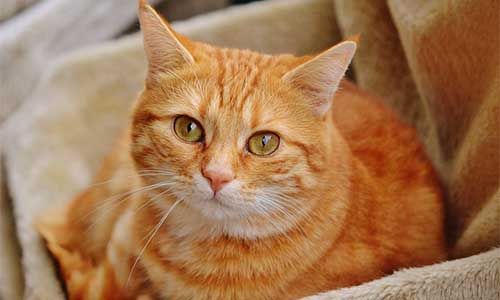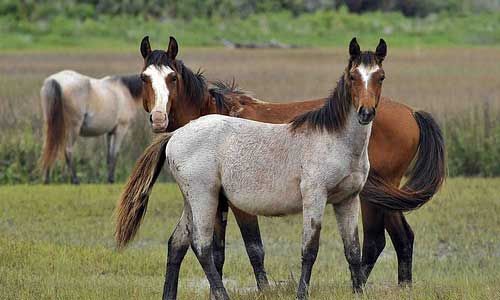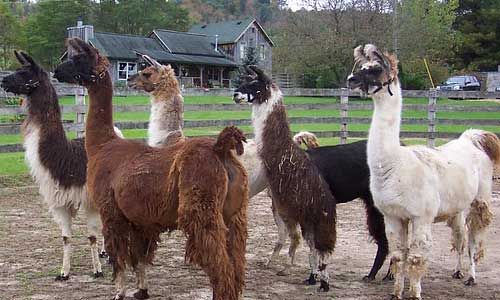Feeding Your Pet
A well balanced diet is essential for a healthy and happy pet. Not only will it provide your pet with enough energy for their day to day activities, but it is also vital for proper brain function. An adequate diet is also particularly important for animals in the early stages of their development.
One of the most important things to remember when it comes to feeding your pet is to feed them by ‘life-stage’. Different animals, and in particular cats and dogs, require different nutrition at different stages of their life. For example, puppies around 12 weeks of age will require around three meals a day and it is not until they reach around six months of age that this amount should be reduced. That said, your animal may prefer smaller and more frequent meals. The key to feeding your pet properly is understanding what works best for them.
Methods of Feeding
A popular method of feeding is known as ‘free-feeding’. This is where a bowl of food is left out so that a pet can eat as much or as little and as frequently as they prefer. This works best for dry foods since they do not spoil as quickly as the wet variety. Some studies show that this method results in over-eating and subsequent pet obesity. However it may be the best option for you if you cannot stick to a feeding schedule.
Scheduled portioned feeding requires a strict routine that you need to be able to guarantee to stick to. Your pet will know when meal times are and they will be sure to be ready for them, with cats coming indoors specifically at these times. This method limits the amount that your pet eats either by portion size or by time as some pet owners prefer to give their animals a specific time frame in which they must eat. This method also works well if you have pets that require medication to be mixed with their food, or have an animal on a calorie-controlled diet.
If you are unsure which method is right for your pet, consult with your veterinarian who will be more than happy to provide advice.
General Feeding Advice
Do NOT offer home cooked meals. These may not meet the complex nutritional needs of your pet. Instead stick to especially formulated pet foods.
Dogs
The first ingredient listed in any dog food should be a specified meat. If the first ingredient listed is a wheat, corn, meat by-product or bone meal then this dog food should be avoided. Dogs’ teeth are primarily made up of canines which are designed for shredding meat not grinding grains.
Dogs should be kept on the same brand and type of food as much as possible. Regularly changing them could cause him to have an upset stomach. If you do have to change then try to introduce the new food gradually so that your dogs’ digestive system has a chance to adjust.
Cats
To cats the odor of their food is particularly important and they prefer their food to be around body temperature when they consume it. Glass or ceramic bowls do not absorb externals odors and are the best choice for feeding. They also like to be able to see their surroundings when they eat and not backed into a corner.
Cats naturally prefer grazing on small meals and so dry food free-feeding is often the most popular choice for mealtimes.
Protein and fats are the most palatable types of food for cats and they much prefer the texture of meat to anything else.
One of the most important things to remember when it comes to feeding your pet is to feed them by ‘life-stage’. Different animals, and in particular cats and dogs, require different nutrition at different stages of their life. For example, puppies around 12 weeks of age will require around three meals a day and it is not until they reach around six months of age that this amount should be reduced. That said, your animal may prefer smaller and more frequent meals. The key to feeding your pet properly is understanding what works best for them.
Methods of Feeding
A popular method of feeding is known as ‘free-feeding’. This is where a bowl of food is left out so that a pet can eat as much or as little and as frequently as they prefer. This works best for dry foods since they do not spoil as quickly as the wet variety. Some studies show that this method results in over-eating and subsequent pet obesity. However it may be the best option for you if you cannot stick to a feeding schedule.
Scheduled portioned feeding requires a strict routine that you need to be able to guarantee to stick to. Your pet will know when meal times are and they will be sure to be ready for them, with cats coming indoors specifically at these times. This method limits the amount that your pet eats either by portion size or by time as some pet owners prefer to give their animals a specific time frame in which they must eat. This method also works well if you have pets that require medication to be mixed with their food, or have an animal on a calorie-controlled diet.
If you are unsure which method is right for your pet, consult with your veterinarian who will be more than happy to provide advice.
General Feeding Advice
Do NOT offer home cooked meals. These may not meet the complex nutritional needs of your pet. Instead stick to especially formulated pet foods.
Dogs
The first ingredient listed in any dog food should be a specified meat. If the first ingredient listed is a wheat, corn, meat by-product or bone meal then this dog food should be avoided. Dogs’ teeth are primarily made up of canines which are designed for shredding meat not grinding grains.
Dogs should be kept on the same brand and type of food as much as possible. Regularly changing them could cause him to have an upset stomach. If you do have to change then try to introduce the new food gradually so that your dogs’ digestive system has a chance to adjust.
Cats
To cats the odor of their food is particularly important and they prefer their food to be around body temperature when they consume it. Glass or ceramic bowls do not absorb externals odors and are the best choice for feeding. They also like to be able to see their surroundings when they eat and not backed into a corner.
Cats naturally prefer grazing on small meals and so dry food free-feeding is often the most popular choice for mealtimes.
Protein and fats are the most palatable types of food for cats and they much prefer the texture of meat to anything else.











